|
Dubrovnik - Marble City by the Sea |
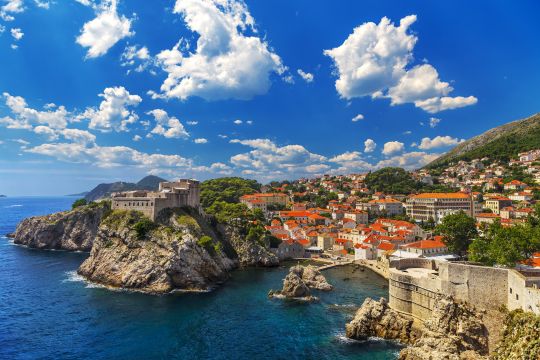 The people of Dubrovnik often proudly quote George Bernard Shaw, who visited the city in 1929: "If you want to see heaven on earth, come to Dubrovnik." Dubrovnik is one of the world's best preserved, fortified medieval cities. The city is filled with architectural treasures and abounds in fascinating history. In the Middle Ages, as the Republic of Ragusa, it became the only eastern Adriatic city-state to rival Venice in the maritime trade and in the arts. Supported by its wealth and skilled diplomacy, Dubrovnik achieved a remarkable level of development during the 15th and 16th centuries. From its establishment in the 7th century, the town was under the protection of the Byzantine Empire. After the Crusades, Ragusa came under the sovereignty of Venice and after the Peace Treaty of Zara in 1358, it became part of the Kingdom of Hungary.  Between the 14th century and 1808 Ragusa ruled itself as a free state named Repubblica di Ragusa. As early as 1272, the Republic of Ragusa received its own Statutes, which, among other things, codified Roman practice and local customs. The Republic was very inventive in its early laws and institutions: the medical service was introduced in 1301, the first pharmacy (still working today) was opened in 1317, a refuge for older people was opened in 1347, the first quarantine hospital was opened in 1377, slave trading was abolished in 1418, the orphanage was opened in 1432 and the water supply system was constructed in 1436. Today, Dubrovnik offers beautifully preserved limestone buildings topped with red tile roofs, quaint streets with charming shops and cafes, and wide medieval walls on which to walk around the city and experience it from many scenic vantage points. 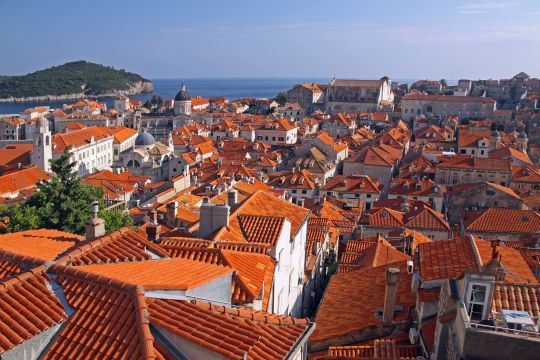 The first thing you notice about Dubrovnik is its whiteness as the entire city is built of white marble. The nightly hosing with water keeps the streets and the buildings impeccably clean and the ban on excessive advertising preserves the medieval ambiance. In the evening, after the crowds leave, Dubrovnik looks exactly the way it looked in the 13th century and you find yourself in the High Middle Ages. |
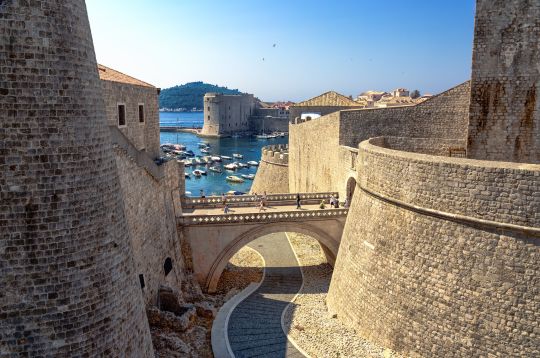 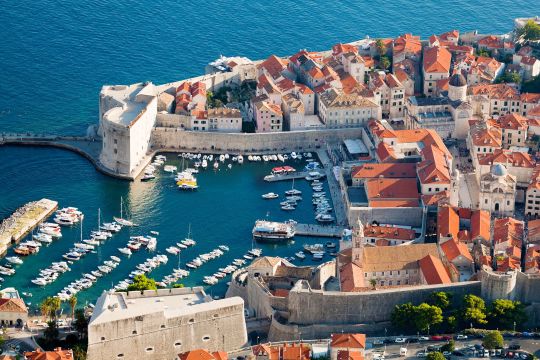 Dubrovnik's Old Town, in its entirety a UNESCO World Heritage site, has spellbinding charm and tells many stories. Although the city dates back to the 7th century, many buildings were devastated in a terrible earthquake in 1667, and were rebuilt in the harmonious style seen today. The architects of Dubrovnik included the best of Croatian masters, among them Juraj Dalmatinac (also the builder of the cathedral at Sibenik and the entire town of Pag) and masters from Venice, Dubrovnik's main rival and trading partner. Architectural beauty is perhaps the reason that the city immerses itself in the arts that manifests itself in galleries and festivals. 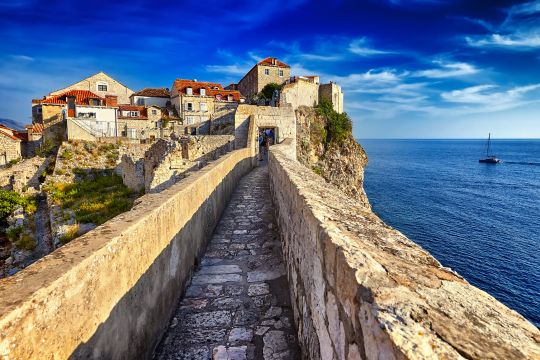 Beauty is only skin deep, and happily this harmony also manifested itself in a rather liberal political system. For example, the city of Dubrovnik abolished slavery at a very early stage (1418). Alongside this respect for humanitarian concerns also came, naturally, the love of freedom. That's why you'll so often see the word "Libertas" on everything from flags to the sides of buses. 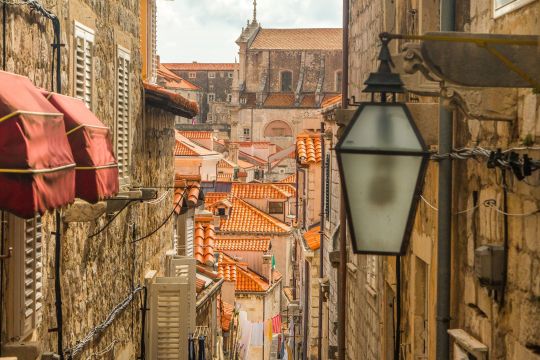 |





